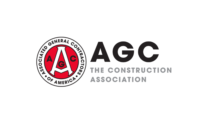Construction Industry Offers Women Opportunities For Success












It’s no secret that construction is a male-dominated industry. In 2015, the Bureau of Labor Statistics reported there were 9.9 million workers in the construction field but only 9.3 percent were women.
There is plenty of room for more women to join the industry—at all levels—and it’s encouraging to see women climbing to new heights in important roles. For example, USG Corp., an industry-leading manufacturer of innovative building products and solutions, recently named its first female CEO, Jennifer Scanlon. She is excited to join other female leaders in the building space, like Jeanne Gang of Studio Gang Architects, Diane Hendricks of ABC Supply, and Mary Rhinehart of Johns Manville.
The opportunities for women in construction are endless. Below are the stories of a few women who have succeeded in the industry; they fought stereotypes and broke down barriers to get to where they are today. They are an inspiring demonstration that women are fully capable of excelling in the construction industry, and point to a future of increased diversity in the workforce.
Patti Paraschuk
Owner, Wallboard Inc., Fridley, Minn.
In 1980, Patti Paraschuk was the first female to be hired at Wallboard Inc. since its inception in the early 1960s. Her good friend Ed Hansen, the founder and owner of Wallboard Inc., convinced Paraschuk to work for him as his office manager. The idea of having a woman work at the company was so new that before she could start, Wallboard Inc. had to install a women’s restroom in its offices. Just four short years later, Paraschuk bought the company from Hansen—at his insistence—but didn’t tell anyone she was the owner for a year.
“I hoped that when they found out I’d already owned the company for a year it would help them accept me,” explains Paraschuk. “It wasn’t perfect, but I believe the strategy helped. In those days, it was very rare for a woman to be in the construction industry at all, let alone to own a drywall distribution company.”
Using her life savings as a deposit, Paraschuk bought Wallboard Inc. from Hansen under two conditions. The first: keeping her ownership under wraps for a year; the second: Hansen had the right to take the company back if Paraschuk missed three payments in a row—which never happened.
“Ed was way ahead of his time,” says Paraschuk. “He saw something in me, believed in me and ultimately sold his business to me. It didn’t matter that I was female. In his eyes, I was the best person for the job.”
In the early years, Paraschuk worked 12-hour days, six days a week. She was still learning about the industry, selling products and managing the business. Her greatest challenge was proving herself to everyone and gaining trust.
Q: What’s the greatest challenge for women in the construction industry?
A: The biggest challenge for women in the industry is to get hired into positions other than secretarial or accounting. Women should absolutely be in sales; we excel because we are detail oriented.
Q: What advice can you give to women considering careers in this industry?
A: Most importantly, don’t be afraid to not know the answer. Just admit it, tell the customer you’ll get the information they need and then do it. You’ll ultimately earn their respect by meeting their needs and providing the information they are looking for.
Q: What does the future hold for women in the construction industry?
A: The sky’s the limit. Women can do anything they want to.
Chris Pomeroy
Sales Manager, Interior Products Supply,
a division of Gypsum Management Supply,
Fort Wayne, Ind.
At age 19, Chris Pomeroy started working for Interior Products Supply in Fort Wayne, Ind., as a receptionist. “I didn’t know anything about the industry back then,” says Pomeroy. “I worked hard, did my job and learned everything I could so I would be helpful to our customers.”
Q: What is the greatest challenge for women in the construction industry?
A: The greatest challenge for women, in my opinion, is overcoming stereotypes. When I started in sales 28 years ago, I found that everyone looked at me as if they were thinking, “What does she know?”
Q: What are the greatest changes you have seen during your years in the industry?
A: Technology has had a tremendous impact on my business. I used to be out on job sites talking to my customers, seeing how projects were moving along and determining their needs. I was rarely in the office. Today, I make a conscious effort to go see my customers on the job. The face-to-face meetings are so rewarding and make developing personal relationships with customers so much easier.
Q: What advice can you give to women considering careers in this industry?
A: Women should not shy away from the construction industry as a career option. There are so many opportunities at all levels. I believe women should consider construction whether it is in management, sales or at the trade level.
Debbie Hauanio
Ceiling Installation, Gibson Lewis, Indianapolis
Debbie Hauanio is a union carpenter who specializes in ceiling installation for Gibson Lewis in Indianapolis, Ind. She credits her success in the industry to working hard and enjoying a challenge.
As a lead ceiling installer with 23 years of experience, Hauanio runs an acoustical ceiling crew of six to eight installers. Her responsibilities run the gamut from organizing the teams and turning in weekly reports, to ensuring materials arrive on schedule and overseeing their installation.
Hauanio likes the varied nature of her job. “I kind of fell into the industry but I liked it. I did a four year apprenticeship and learned that it’s hard work, but can also be a lot of fun,” says Hauanio. “I don’t think I’d like being in an office every day. I like the sense of accomplishment when we finish a job and move on to the next.”
Hauanio is thankful for the opportunities she has had at Gibson Lewis. “I’ve been given many opportunities to prove myself and gained greater responsibility each time I’ve met those expectations.”
Q: What’s the greatest challenge for women in the construction industry?
A: I think many women don’t even have construction on their radar because of the physical demands of the job. They might be surprised if they tried! I had an interest in fixing things in my home. One thing led to another and here I am.
Q: What are the greatest changes you have seen during your years in the industry?
A: From my perspective as an installer, I haven’t seen a lot of changes. I haven’t seen a significant increase in women at the trade level. It takes a specific type of person to do what I do. It’s a lot of hard work.
Q: What advice can you give to women considering careers in this industry?
A: The best advice I have is to keep an open mind. If you’re interested, look into it. Talk to people in the industry. Don’t rule it out on principle. I probably work harder than most just because I’m a woman. The expectation that women can’t do the job as well as a man spurs me on. I often think, “Don’t tell me I can’t because I’m a girl! I’ll show you!”
Nora Degnan
Project Estimator,
Thorne Associates Inc., Chicago
Nora Degnan was literally born into the construction industry. Her dad is a union carpenter and has been working with her uncle at Thorne Associates since it began. Both are now part owners in the firm. Degnan has been there since college. “When my uncle offered me the opportunity to work with him as a project estimator I immediately accepted. My cousin and I are now on the path to owning the business and I couldn’t be more thrilled!”
Q: What is the greatest challenge for women in the industry?
A: I believe the greatest challenge for women is perception. Unfortunately, women still have to prove they have the skillset and knowledge to be in this business.
Q: What changes have you seen in the industry during your career?
A: In addition to the massive amount of technological advances, I have watched more women join the industry every year. I have seen a major resurgence of local women-centered industry groups. We are all working together to create bonds and break barriers.
Q: What do you believe to be the greatest opportunity for women in the industry today? In five years?
A: Women are finally breaking into the higher profile positions and I believe this is the final frontier. In five years I believe we absolutely will have more women as chief estimators, senior project managers, VPs, presidents and business owners.
Kim DeBacco
Acoustical Estimator / Project Manager,
TP Acoustics, Phoenix
Kim DeBacco is an estimator/project manager at the Phoenix location of TP Acoustics. She has been a part of the TP Team for five years and is responsible for all aspects of her projects, from estimating and securing projects, to providing support and coordination as required, which includes site visits and review meetings.
Her career began in the mid-80s when she worked for a local competitor after school and during college. She worked as the receptionist and material sales person. Over the course of 19 years, the responsibilities continued to grow and other opportunities presented themselves. This expanded her experience and resume by helping grow, develop, and even launch acoustical divisions with other competing firms, some nationally based. Today she is one of the top performing members at TP and enjoys contributing to her team.
Q: What’s the greatest challenge for women in the construction industry?
A: As a sign of the times, today’s generations are far more accepting of women in construction. In the beginning of my career the greatest challenge was proving I was just as good as anyone else and was capable of being an estimator in the construction industry.
Q: What advice can you give to women considering careers in this industry?
A: You have to be driven and never give up! It can be overwhelming, but the rewards are there if you stick with it. Be persistent. Be passionate!
Q: What are the greatest changes you have seen during your years in the industry?
A: I have noticed that more women are now in the industry and are moving into project management positions. When I started my career, women were primarily working in the offices, not out on job sites as estimators or project managers.
Looking for a reprint of this article?
From high-res PDFs to custom plaques, order your copy today!














